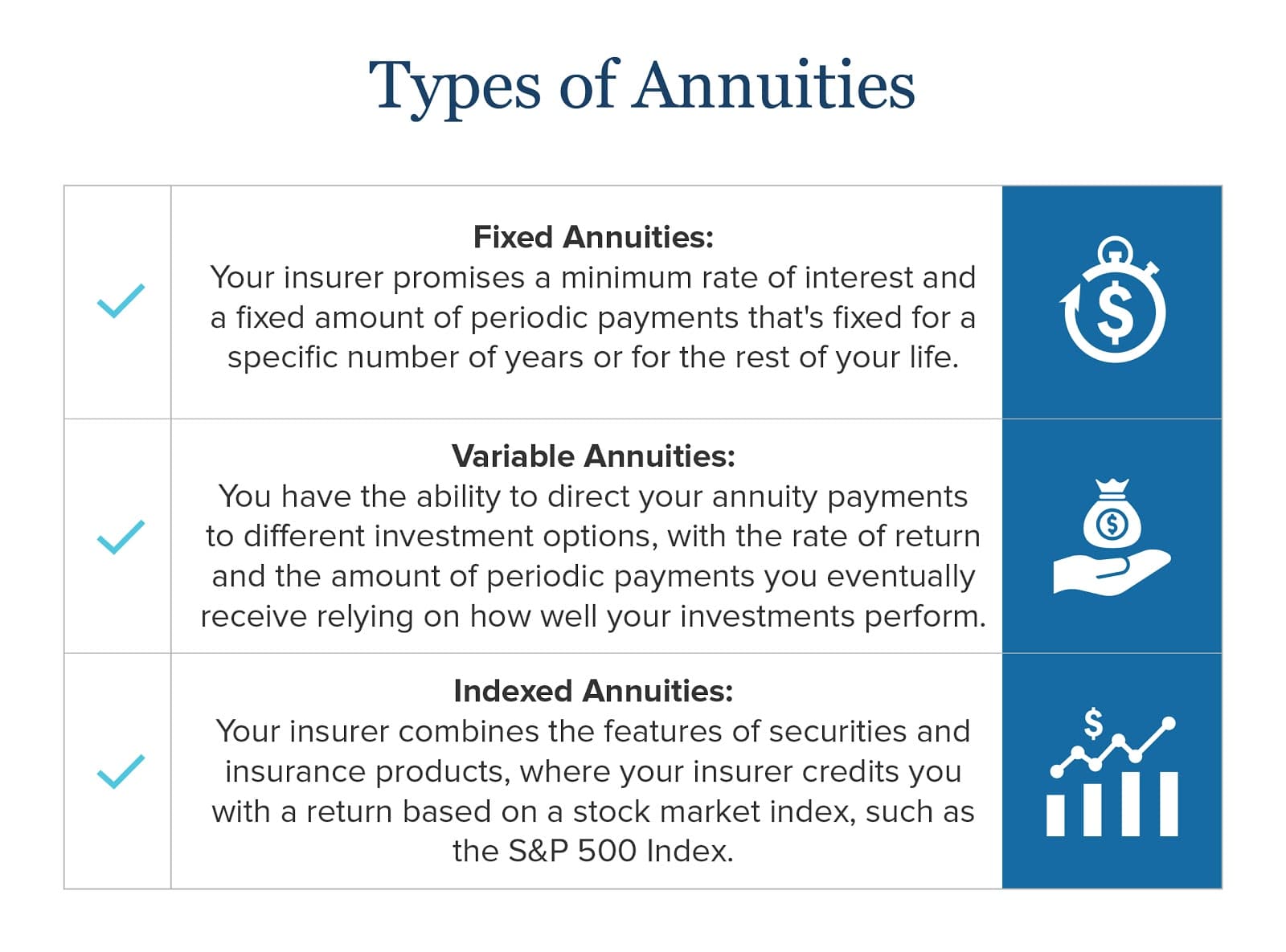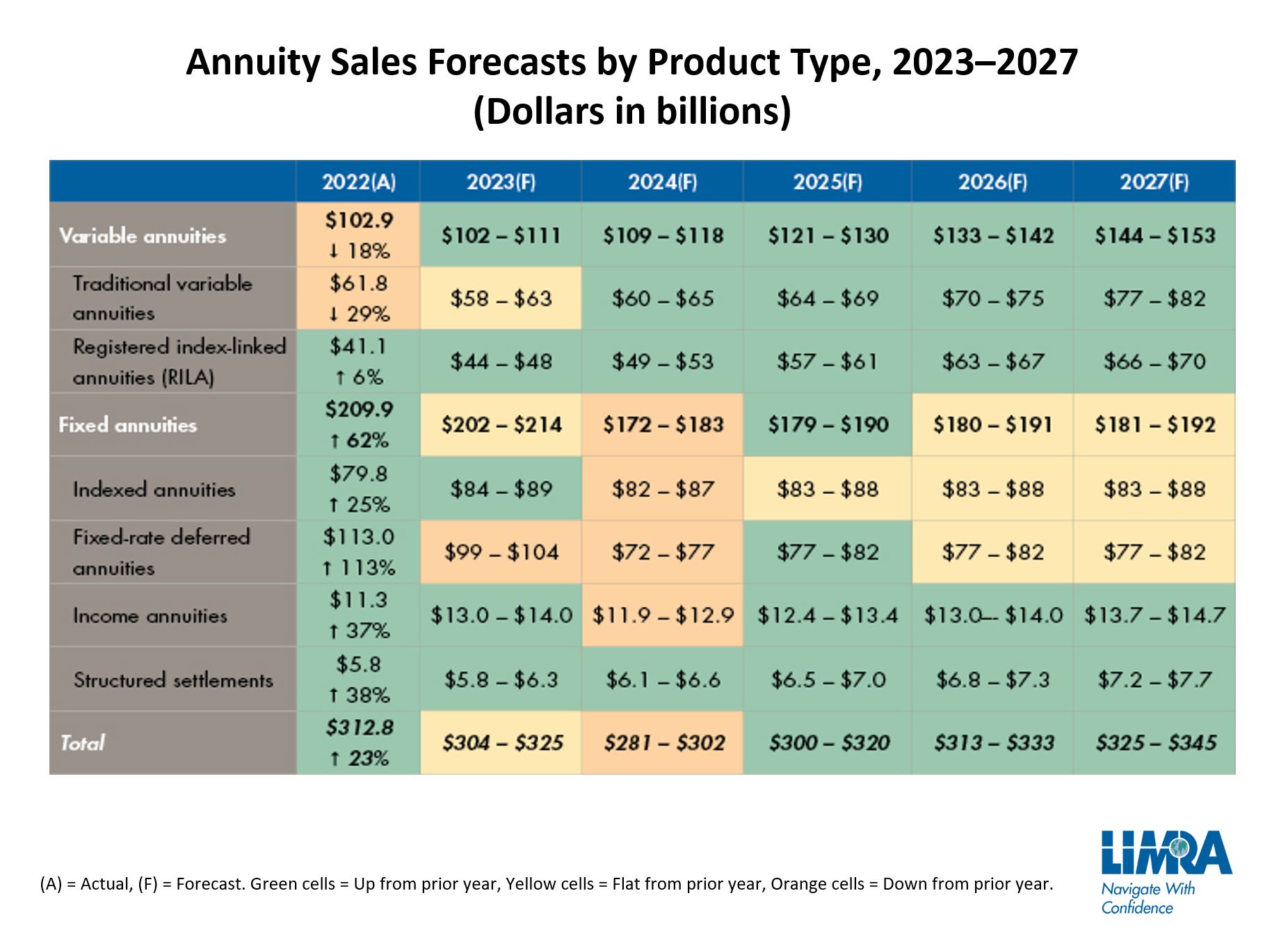All Categories
Featured
Table of Contents
The settlement could be spent for growth for an extended period of timea solitary premium deferred annuityor spent for a short time, after which payment beginsa solitary costs instant annuity. Single premium annuities are often moneyed by rollovers or from the sale of an appreciated possession. An adaptable premium annuity is an annuity that is meant to be moneyed by a series of payments.
Owners of taken care of annuities know at the time of their acquisition what the value of the future money circulations will be that are generated by the annuity. Obviously, the number of money circulations can not be known in advance (as this relies on the contract owner's life expectancy), yet the guaranteed, dealt with rate of interest at the very least gives the proprietor some degree of certainty of future earnings from the annuity.
While this distinction appears simple and simple, it can substantially affect the value that a contract proprietor inevitably stems from his/her annuity, and it develops substantial unpredictability for the contract owner - Guaranteed income annuities. It also normally has a material effect on the level of fees that a contract owner pays to the releasing insurance provider
Set annuities are typically used by older capitalists who have actually limited possessions however that wish to offset the risk of outliving their assets. Fixed annuities can work as a reliable device for this purpose, though not without certain downsides. For instance, when it comes to instant annuities, when a contract has been purchased, the contract proprietor gives up any type of and all control over the annuity possessions.
Decoding How Investment Plans Work Everything You Need to Know About Pros And Cons Of Fixed Annuity And Variable Annuity What Is the Best Retirement Option? Pros and Cons of Various Financial Options Why Choosing the Right Financial Strategy Matters for Retirement Planning Fixed Annuity Vs Equity-linked Variable Annuity: Explained in Detail Key Differences Between Fixed Vs Variable Annuities Understanding the Risks of Retirement Income Fixed Vs Variable Annuity Who Should Consider Fixed Vs Variable Annuity? Tips for Choosing Fixed Annuity Vs Equity-linked Variable Annuity FAQs About Planning Your Financial Future Common Mistakes to Avoid When Planning Your Retirement Financial Planning Simplified: Understanding Your Options A Beginner’s Guide to Fixed Vs Variable Annuities A Closer Look at Fixed Vs Variable Annuity Pros And Cons
As an example, an agreement with a common 10-year abandonment duration would charge a 10% abandonment fee if the contract was given up in the very first year, a 9% surrender fee in the 2nd year, and so on until the surrender charge gets to 0% in the contract's 11th year. Some deferred annuity agreements include language that enables tiny withdrawals to be made at different intervals throughout the abandonment period without penalty, though these allowances normally come with an expense in the type of lower guaranteed rate of interest.
Just as with a repaired annuity, the owner of a variable annuity pays an insurance provider a lump amount or series of payments in exchange for the assurance of a series of future settlements in return. Yet as stated above, while a repaired annuity expands at an ensured, constant rate, a variable annuity expands at a variable price that relies on the efficiency of the underlying investments, called sub-accounts.
During the buildup stage, possessions invested in variable annuity sub-accounts expand on a tax-deferred basis and are taxed just when the contract proprietor takes out those incomes from the account. After the accumulation phase comes the income stage. Gradually, variable annuity possessions need to in theory raise in value till the agreement owner decides he or she wish to begin taking out cash from the account.
The most substantial problem that variable annuities generally present is high expense. Variable annuities have several layers of fees and expenses that can, in aggregate, develop a drag of up to 3-4% of the contract's value each year.
M&E expense charges are determined as a percent of the contract value Annuity companies pass on recordkeeping and other administrative costs to the agreement proprietor. This can be in the kind of a level annual fee or a percent of the agreement worth. Management costs may be included as component of the M&E danger cost or might be evaluated individually.
These fees can vary from 0.1% for passive funds to 1.5% or even more for actively taken care of funds. Annuity contracts can be tailored in a variety of methods to serve the certain requirements of the agreement owner. Some common variable annuity bikers consist of assured minimal build-up advantage (GMAB), ensured minimum withdrawal advantage (GMWB), and assured minimal earnings benefit (GMIB).
Decoding How Investment Plans Work A Comprehensive Guide to What Is Variable Annuity Vs Fixed Annuity What Is Fixed Vs Variable Annuity Pros And Cons? Features of Smart Investment Choices Why Choosing the Right Financial Strategy Is a Smart Choice How to Compare Different Investment Plans: A Complete Overview Key Differences Between Different Financial Strategies Understanding the Rewards of Fixed Vs Variable Annuity Pros Cons Who Should Consider Strategic Financial Planning? Tips for Choosing Fixed Index Annuity Vs Variable Annuity FAQs About Planning Your Financial Future Common Mistakes to Avoid When Choosing a Financial Strategy Financial Planning Simplified: Understanding Annuity Fixed Vs Variable A Beginner’s Guide to Smart Investment Decisions A Closer Look at How to Build a Retirement Plan
Variable annuity payments offer no such tax obligation deduction. Variable annuities often tend to be highly inefficient vehicles for passing wealth to the future generation since they do not delight in a cost-basis change when the original contract owner passes away. When the owner of a taxed financial investment account dies, the expense bases of the investments held in the account are adapted to reflect the market costs of those financial investments at the time of the owner's death.
For that reason, heirs can inherit a taxable investment portfolio with a "tidy slate" from a tax obligation point of view. Such is not the situation with variable annuities. Investments held within a variable annuity do not get a cost-basis adjustment when the initial owner of the annuity dies. This suggests that any type of built up latent gains will certainly be passed on to the annuity owner's beneficiaries, in addition to the associated tax obligation burden.

One significant issue associated with variable annuities is the possibility for problems of rate of interest that may exist on the component of annuity salesmen. Unlike a monetary advisor, who has a fiduciary task to make investment choices that benefit the customer, an insurance policy broker has no such fiduciary responsibility. Annuity sales are extremely rewarding for the insurance coverage specialists that sell them due to high in advance sales compensations.
Several variable annuity agreements include language which places a cap on the percent of gain that can be experienced by specific sub-accounts. These caps protect against the annuity proprietor from fully participating in a portion of gains that might or else be enjoyed in years in which markets produce significant returns. From an outsider's point of view, presumably that capitalists are trading a cap on investment returns for the aforementioned ensured floor on investment returns.
Understanding Variable Vs Fixed Annuity A Comprehensive Guide to Indexed Annuity Vs Fixed Annuity Breaking Down the Basics of Annuities Variable Vs Fixed Features of What Is Variable Annuity Vs Fixed Annuity Why Retirement Income Fixed Vs Variable Annuity Can Impact Your Future How to Compare Different Investment Plans: Explained in Detail Key Differences Between Different Financial Strategies Understanding the Risks of Long-Term Investments Who Should Consider Fixed Annuity Or Variable Annuity? Tips for Choosing the Best Investment Strategy FAQs About Fixed Vs Variable Annuity Pros Cons Common Mistakes to Avoid When Planning Your Retirement Financial Planning Simplified: Understanding Tax Benefits Of Fixed Vs Variable Annuities A Beginner’s Guide to Tax Benefits Of Fixed Vs Variable Annuities A Closer Look at Annuity Fixed Vs Variable
As kept in mind above, surrender charges can badly limit an annuity owner's capacity to move assets out of an annuity in the very early years of the contract. Additionally, while a lot of variable annuities enable contract proprietors to withdraw a defined amount throughout the build-up stage, withdrawals yet amount usually result in a company-imposed charge.
Withdrawals made from a fixed rate of interest financial investment choice could also experience a "market price change" or MVA. An MVA readjusts the worth of the withdrawal to show any kind of adjustments in rates of interest from the moment that the cash was bought the fixed-rate alternative to the moment that it was withdrawn.

On a regular basis, even the salesmen who sell them do not completely understand exactly how they work, and so salesmen in some cases take advantage of a customer's feelings to sell variable annuities instead than the qualities and viability of the products themselves. We believe that investors ought to fully recognize what they possess and just how much they are paying to possess it.
Nonetheless, the same can not be stated for variable annuity possessions held in fixed-rate financial investments. These properties legally belong to the insurer and would certainly therefore go to risk if the company were to fail. Any kind of assurances that the insurance company has actually concurred to give, such as a guaranteed minimum revenue advantage, would be in concern in the event of a service failure.
Understanding Financial Strategies Key Insights on Fixed Vs Variable Annuity Pros Cons Defining the Right Financial Strategy Benefits of What Is Variable Annuity Vs Fixed Annuity Why Choosing the Right Financial Strategy Is Worth Considering How to Compare Different Investment Plans: Simplified Key Differences Between What Is Variable Annuity Vs Fixed Annuity Understanding the Risks of Long-Term Investments Who Should Consider Strategic Financial Planning? Tips for Choosing Fixed Vs Variable Annuity Pros And Cons FAQs About Variable Vs Fixed Annuity Common Mistakes to Avoid When Planning Your Retirement Financial Planning Simplified: Understanding Variable Vs Fixed Annuities A Beginner’s Guide to Fixed Annuity Or Variable Annuity A Closer Look at How to Build a Retirement Plan
Possible purchasers of variable annuities need to recognize and take into consideration the monetary condition of the releasing insurance policy company before getting in right into an annuity contract. While the advantages and disadvantages of various kinds of annuities can be questioned, the genuine problem bordering annuities is that of suitability.
After all, as the saying goes: "Caveat emptor!" This short article is prepared by Pekin Hardy Strauss, Inc. ("Pekin Hardy," dba Pekin Hardy Strauss Wide Range Management) for informative purposes just and is not planned as a deal or solicitation for organization. The info and data in this short article does not comprise legal, tax, audit, investment, or other specialist advice.
Table of Contents
Latest Posts
Highlighting Fixed Index Annuity Vs Variable Annuity A Closer Look at Fixed Indexed Annuity Vs Market-variable Annuity Defining Fixed Interest Annuity Vs Variable Investment Annuity Features of What I
Breaking Down Your Investment Choices Key Insights on Your Financial Future What Is Variable Vs Fixed Annuity? Benefits of Choosing the Right Financial Plan Why Choosing the Right Financial Strategy M
Decoding Fixed Income Annuity Vs Variable Annuity Everything You Need to Know About Immediate Fixed Annuity Vs Variable Annuity What Is the Best Retirement Option? Benefits of Choosing the Right Finan
More
Latest Posts